The risk assessment step consists of the identification of hazards, vulnerability and exposure-prone factors to climate change in the target region/sector. The purpose of risk assessment is to provide the overall decision criteria for prioritizing adaptation measures. This section presents useful tools and capacity-building programs for conducting risk assessments.
Climate change risk assessment
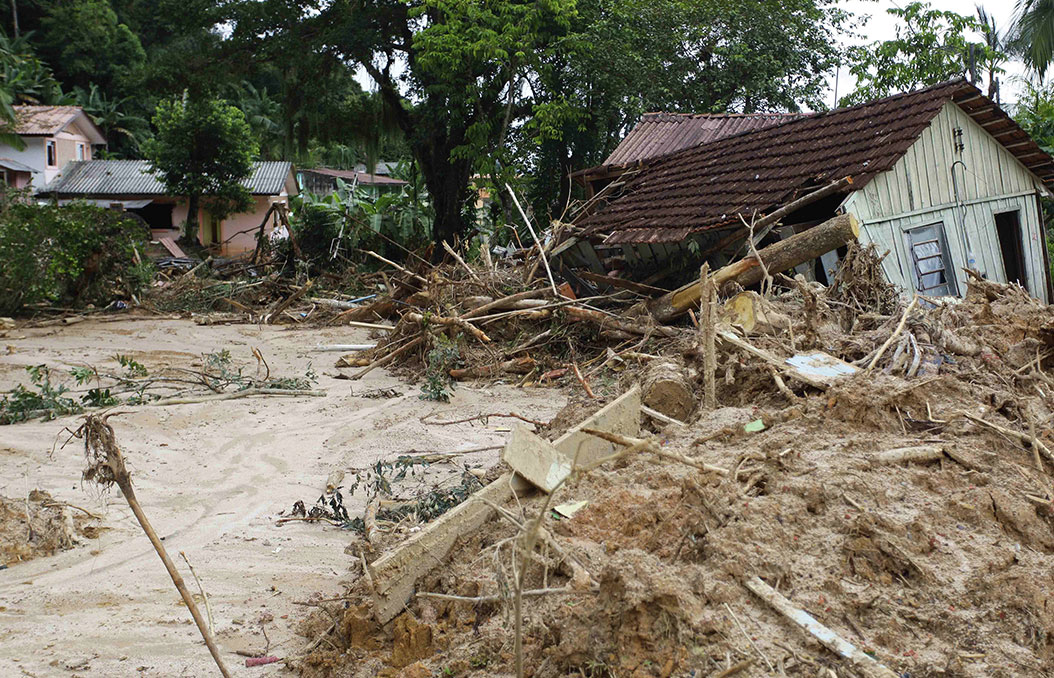
Climate change risk is a shared risk, and businesses, the public sector and civil society all engage in its causes. Consequently, risk assessment must be considered a shared endeavor. Thus, it requires a people-centered and multi-sector approach, building resilience to complicated climate risks. In addition to the results of scientific analysis, risk assessment should incorporate an experience gained by the participatory approach that takes into account local and indigenous knowledge.
Data and technologies for conducting climate change risk assessment are constantly evolving, and recently the number of resources directly available to countries, municipalities, and local communities in developing countries has been increasing. AP-PLAT introduces a variety of risk assessment tools and capacity-building programs that are particularly useful for the Asia-Pacific region, which faces challenges such as floods, food crises, and urban management.
Tools
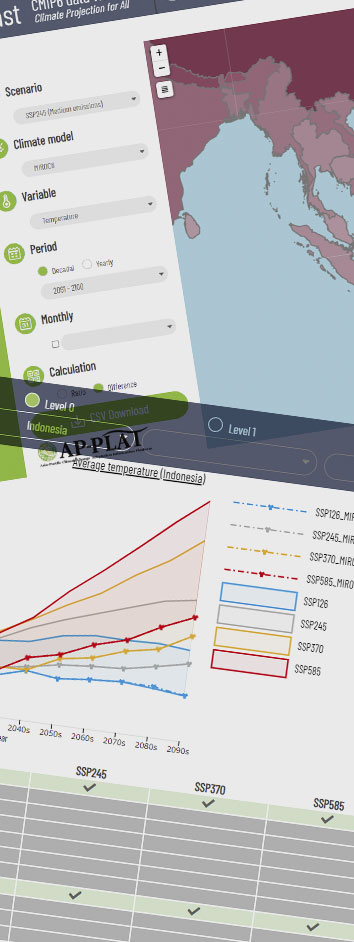
- ClimoCast
-
ClimoCast is a climate projection tool that gives projections of temperature and precipitation up to the year 2100 in four representative greenhouse gas emissions scenarios (SSP126 - 585) and 10 major climate simulation models. The tool covers all countries and allows users to compare different scenarios and models, as well as downscale the results to sub-national level. Climate data can be downloaded in CSV format.
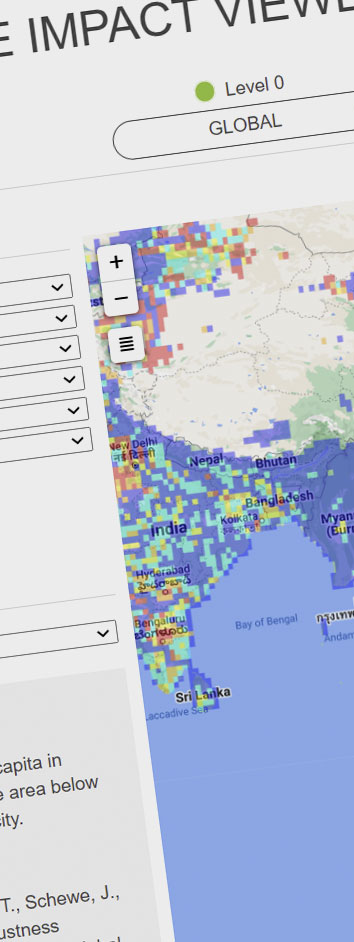
- Climate Impact Viewer
-
Climate Impact Viewer shows the results of a climate change impact assessment based on the Integrated Climate Assessment - Risks, Uncertainties and Society (ICA-RUS) and Comprehensive Research on the Development of Global Climate Change Risk Management Strategies (S-10 Strategic Research Project) supported by the Environment Research and Technology Development Fund of the Ministry of the Environment, Japan. Process-based impact models for multiple sectors were used for future influence projections.
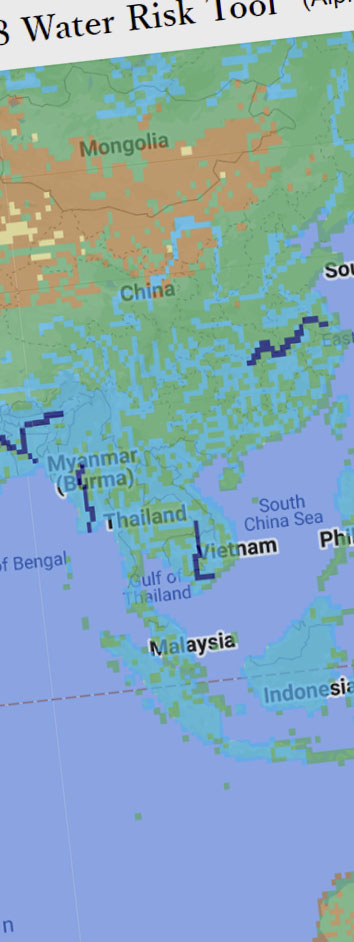
- H08 Water Risk Tool
-
H08 Water Risk Tool is a water risk assessment tool based on a global hydrological model termed H08, which enables detailed assessment of climate change impacts on the global water cycle and water resources. Taking advantage of the feature of fully process-based simulation, H08 can display the background and factors of water risk assessment results - for example, it can show whether future water shortages are caused by decreasing rainfall or increasing water demand, providing users with useful information to consider specific countermeasures.
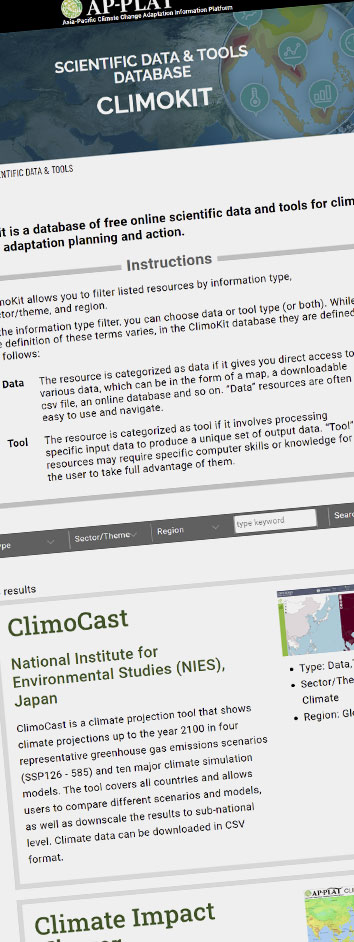
- ClimoKit
-
ClimoKit is a database of more than 50 free online scientific data and tools for climate change adaptation planning and action, especially useful to understand the future climate projections and their socio-economic impacts in localities. It allows you to filter listed resources by information type, sector/theme, and region.
E-learning

- Utilize a climate projection tool “ClimoCast” for the NAP process
-
“ClimoCast” is an innovative tool that makes climate projection possible for everyone. This e-learning course explains how ClimoCast can be used to develop a convincing NAP, especially when it comes to implementation of adaptation measures.

- Use of the S8 Downscaler (S8DS), a climate downscaling tool to aid climate adaptation planning
-
This e-learning course will teach users how to utilize the S8 Downscaler (S8DS), a climate downscaling tool that can assist in planning for climate change adaptation. It is a web application based on a Graphic User Interface (GUI) that performs dynamical downscaling and develops climate projection with simple click and drag functions The S8DS aims to support the NAP process with various integrated features.

- Building resilience to compound and cascading disaster risks
-
As latest science showed in the IPCC AR6 WGII report, multiple extreme events that compound the risks are more difficult to manage. So, there is now an urgent need to deal with compound and cascading disasters caused by climate change. This e-learning course targets local/national government officers and will help them develop the capacity to implement specific measures to build resilience against such disasters.

- Other E-learning Courses
-
AP-PLAT provides varieties of e-learning courses on emerging adaptation issues. The contents will be kept updated. See the full list of available learning materials and start your learning journey.
Reference:
UNDRR, Understanding Disaster Risk (preventionweb.net)
IPCC, WGII Sixth Assessment Report, Press conference presentation

- NAP PROCESS UNDER THE UN FRAMEWORK
- Understand why adaptation planning is necessary in the long run to implement the Paris Agreement. Learn about the latest trends in international adaptation negotiations and support systems for NAP formulation under the UN bodies.

- STATUS OF ADAPTATION IN THE ASIA-PACIFIC
- What adaptation plans are being developed in the Asia-Pacific? Learn some of the most distinctive features and best practices, and find the latest information on adaptation plans being carried out by your neighboring countries or countries facing similar challenges.

- Finance & Implementation
- Identify key points, good practices, and useful examples for financing both in the planning and implementation phases of adaptation.

- Monitoring & Evaluation
- Once adaptation measures are implemented, Monitoring and Evaluation (M&E) is conducted to track and evaluate the effectiveness of adaptation measures. Find useful resources including the latest discussions and good practices here.
